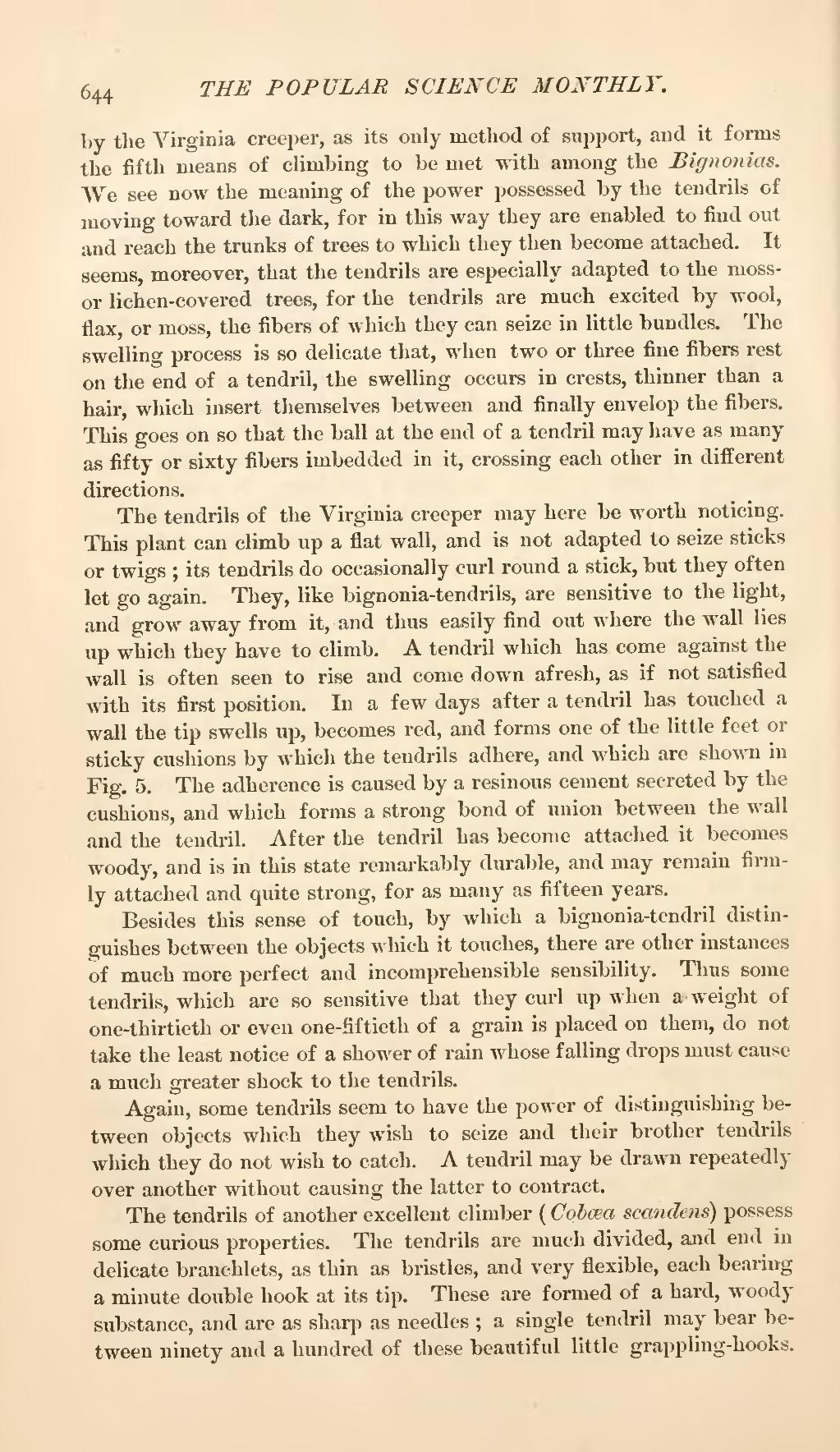by the Virginia creeper, as its only method of support, and it forms the fifth means of climbing to be met with among the Bignonias. We see now the meaning of the power possessed by the tendrils of moving toward the dark, for in this way they are enabled to find out and reach the trunks of trees to which they then become attached. It seems, moreover, that the tendrils are especially adapted to the moss lichen-covered trees, for the tendrils are much excited by wool, flax, or moss, the fibers of which they can seize in little bundles. The swelling process is so delicate that, when two or three fine fibers rest on the end of a tendril, the swelling occurs in crests, thinner than a hair, which insert themselves between and finally envelop the fibers. This goes on so that the ball at the end of a tendril may have as many as fifty or sixty fibers imbedded in it, crossing each other in different directions.
The tendrils of the Virginia creeper may here be worth noticing. This plant can climb up a flat wall, and is not adapted to seize sticks or twigs; its tendrils do occasionally curl round a stick, but they often let go again. They, like bignonia-tendrils, are sensitive to the light, and grow away from it, and thus easily find out where the wall lies up which they have to climb. A tendril which has come against the wall is often seen to rise and come down afresh, as if not satisfied with its first position. In a few days after a tendril has touched a wall the tip swells up, becomes red, and forms one of the little feet or sticky cushions by which the tendrils adhere, and which are shown in Fig. 5. The adherence is caused by a resinous cement secreted by the cushions, and which forms a strong bond of union between the wall and the tendril. After the tendril has become attached it becomes woody, and is in this state remarkably durable, and may remain firmly attached and quite strong, for as many as fifteen years.
Besides this sense of touch, by which a bignonia-tendril distinguishes between the objects which it touches, there are other instances of much more perfect and incomprehensible sensibility. Thus some tendrils, which are so sensitive that they curl up when a weight of one-thirtieth or even one-fiftieth of a grain is placed on them, do not take the least notice of a shower of rain whose falling drops must cause a much greater shock to the tendrils.
Again, some tendrils seem to have the power of distinguishing between objects which they wish to seize and their brother tendrils which they do not wish to catch. A tendril may be drawn repeatedly over another without causing the latter to contract.
The tendrils of another excellent climber (Cobœa scandens) possess some curious properties. The tendrils are much divided, and end in delicate branchlets, as thin as bristles, and very flexible, each bearing a minute double hook at its tip. These are formed of a hard, woody substance, and are as sharp as needles; a single tendril may bear between ninety and a hundred of these beautiful little grappling-hooks.
